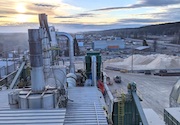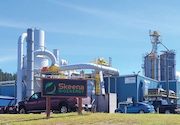| |
| |
| |
 |
|
@{mv_date_MMM d, yyyy}@ |
|
| |
 For Canada’s northern and remote communities, bioenergy represents an opportunity not only for clean, renewable energy, but also for more independence and revenue, according to a new study from Natural Resources Canada.
» Read more...
For Canada’s northern and remote communities, bioenergy represents an opportunity not only for clean, renewable energy, but also for more independence and revenue, according to a new study from Natural Resources Canada.
» Read more...
The pellet plant opened in 1995 and produces pellets primarily from sawmill residues under the brand Eagle Valley Fuel Pellets. Around half of the plant’s output is contracted to Drax.
» Read more...
When fully operational in 2025, the state-of-the-art AD facility will be capable of processing up to 200,000 tonnes annually of organic waste and liquid organic waste.
» Read more...
Canada published its final final Clean Fuel Regulations earlier this month, estimating that about 2.2 billion litres of additional low-carbon-intensity diesel and 700 million litres of additional ethanol will be needed in 2030 under the regulations.
» Read more...
“While there are some 60 countries with national bioeconomy strategies, Canada is not among them.” Jeff Passmore explains why Canada cannot meet its climate commitments without biomass.
» Read more...
|
| |
|
| |
 Premium Pellet in Vanderhoof, B.C., is in the midst of a massive cap-ex project that will nearly double its capacity while allowing the facility to accept more low-grade forestry residuals. Read our latest wood pellet profile.
» Read more...
Premium Pellet in Vanderhoof, B.C., is in the midst of a massive cap-ex project that will nearly double its capacity while allowing the facility to accept more low-grade forestry residuals. Read our latest wood pellet profile.
» Read more... |
| |
 WPAC executive director Gordon Murray explains how a resilient wood pellet sector can play a role in the growing bioeconomy.
» Read more...
WPAC executive director Gordon Murray explains how a resilient wood pellet sector can play a role in the growing bioeconomy.
» Read more... |
| |
|
| |
|
|
| |
| |



